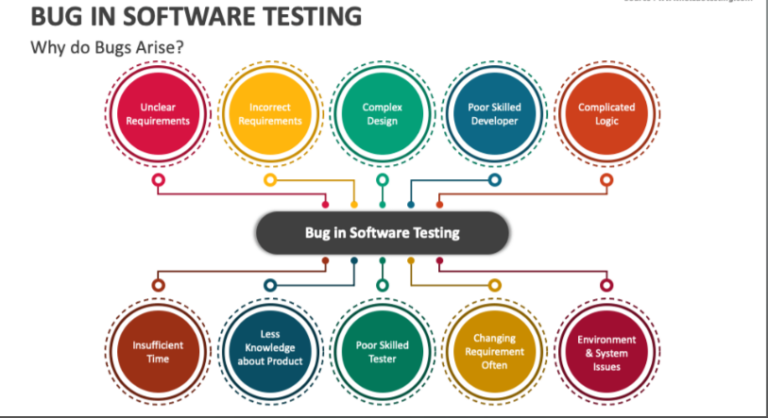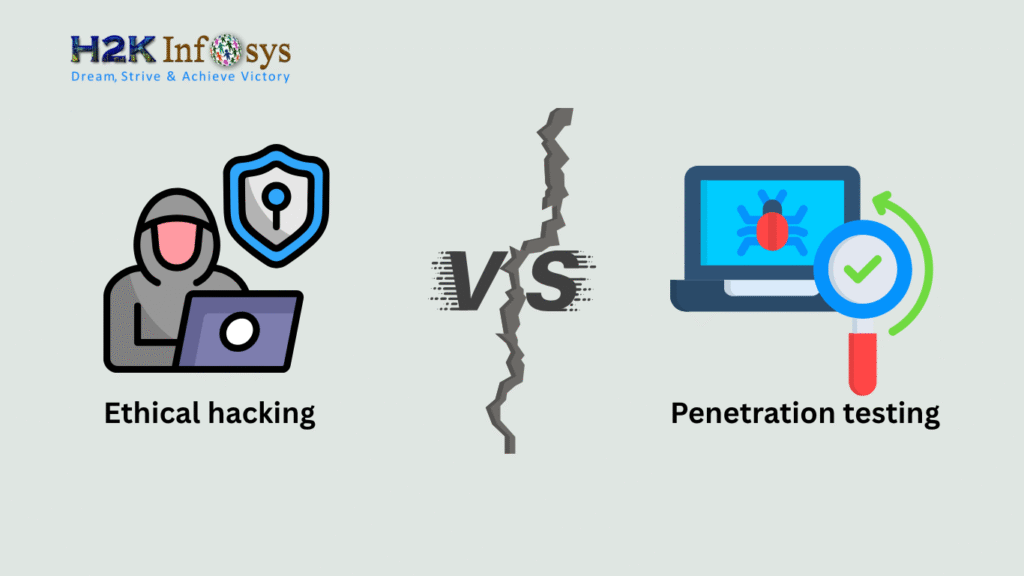Bugs in Software Testing inevitable part of the process. These defects, flaws, or errors can cause software to behave unexpectedly or crash entirely. As software systems grow more complex, the number of potential bugs increases. Effective bug identification and management in software testing are crucial for delivering reliable and high-performing applications. In this blog, we will explore what bugs are, how they arise, the different types, and how they are managed during Software testing online course.
What Are Bugs in Software Testing?
In software development, a bug is an error or flaw that prevents the program from functioning as intended. Bugs can occur at any stage of development whether in the planning phase, during coding, or in deployment. They can range from simple issues like incorrect spelling in the user interface to critical bugs that crash systems or lead to significant security vulnerabilities.
Causes of Bugs in Software
There are several reasons why bugs occur in software. Understanding the common causes can help development teams prevent or reduce the number of bugs introduced during the software development life cycle (SDLC). Some of the main causes include:
Human Error: Since humans write code, mistakes are inevitable. A simple typo or logical error can result in bugs.
Complex Code: As applications become more intricate, the probability of errors increases. Highly complex systems require robust testing to ensure all components work together as intended.
Miscommunication or Lack of Communication: If the requirements or specifications for the software are misunderstood by the development team, the final product may not meet expectations, resulting in bugs.
Changes in Requirements: Frequent or late changes to project requirements can introduce new bugs into a codebase that was previously stable.
Third-Party Software: Dependencies on external libraries or services can introduce bugs, especially if those third-party systems are not properly tested or maintained.
Hardware Incompatibility: Sometimes, bugs arise due to conflicts between software and the hardware it is running on.
Environmental Issues: Differences in deployment environments—such as operating systems, servers, and browsers can lead to bugs that are difficult to reproduce.

Types of Bugs in Software Testing
Bugs in Software Testing can be categorized into various types depending on their origin, severity, and impact on the software. Some of the most common types include:
Functional Bugs
Functional bugs occur when a feature of the software does not perform as specified. For example, if a button that is supposed to submit data fails to do so, this is classified as a functional bug. These bugs are usually discovered during functional testing, where testers verify that the system behaves according to the functional specifications.
Performance Bugs
Performance bugs affect the efficiency of the software. This type of bug causes slow response times, high memory usage, or unresponsiveness under certain conditions, such as during high user loads. Performance testing is designed to identify and fix these bugs to ensure that the software performs optimally under various conditions.
Security Bugs
Security bugs are vulnerabilities that can be exploited to gain unauthorized access to the system, steal data, or cause other malicious outcomes. These bugs are especially critical in industries such as finance, healthcare, and e-commerce, where sensitive information is handled. Security testing aims to identify and mitigate these bugs to protect the system from external threats.
User Interface (UI) Bugs
UI bugs are related to the visual elements of the software. These bugs may include incorrect text, broken images, misaligned elements, or buttons that don’t work. While these bugs may not affect the core functionality of the software, they can significantly impact the user experience and should be addressed promptly.
Compatibility Bugs
Compatibility bugs arise when the software fails to function correctly on different devices, operating systems, or browsers. For example, a website may work perfectly on one browser but fail on another. Compatibility testing ensures that the software delivers a consistent experience across multiple platforms.
Logic Bugs
A logic bug occurs when there is a flaw in the algorithm or logic used in the code. This can lead to incorrect outputs or unpredictable behavior. These bugs are typically more difficult to detect, as they may not cause a crash but produce incorrect results.
Integration Bugs
Integration bugs occur when two or more modules or systems do not interact as expected. These bugs usually appear when integrating different parts of a large system or when using third-party APIs. Integration testing is designed to detect such bugs and ensure that all components work seamlessly together.
Boundary Value Bugs
Boundary value bugs occur when software does not handle input values at the boundary of input domains correctly. For instance, a system may accept values from 1 to 100, but a bug might cause it to fail if the input is exactly 100 or 1. These bugs are often identified through boundary value testing.

Stages of Bug Lifecycle in Software Testing
A bug follows a specific lifecycle from the moment it is identified to the point where it is resolved. Understanding this lifecycle helps manage bugs more effectively.
New
Once a bug is identified by a tester, it is logged into a bug tracking system with a status of New. During this phase, all relevant information about the bug such as steps to reproduce, severity, and screenshots—are documented.
Assigned
Once the bug is reviewed, it is assigned to a developer or a team for fixing. The developer reviews the bug details and confirms whether the issue can be replicated.
Open
When the developer starts working on the bug, its status changes to Open. During this phase, the developer investigates the root cause of the bug and applies the necessary code fixes.
Fixed
Once the developer fixes the bug, its status is updated to Fixed. The developer may run preliminary tests to ensure the issue is resolved.
Retesting
The fixed bug is then returned to the testing team for retesting. Testers verify that the bug is no longer reproducible and that the fix does not introduce any new issues.
Closed or Reopened
If the bug is successfully fixed, it is marked as Closed. However, if the issue persists, the bug is marked as Reopened, and the lifecycle begins again until the bug is resolved.
Bug Severity and Priority
When a bug is reported, it is assigned two important attributes: severity and priority. These attributes help development teams manage the bug fixing process efficiently.
Severity
Severity refers to the impact of the bug on the system. Bugs can range from Critical to Minor in terms of severity.
- Critical: The bug causes a complete system failure or data loss.
- High: The bug affects significant functionality but does not cause a system crash.
- Medium: The bug affects some functionality, but workarounds are available.
- Low: The bug is minor and does not affect the functionality.
Priority
Priority defines the urgency with which the bug should be fixed. While severity is based on the bug’s impact, priority is influenced by business needs.
- High Priority: The bug must be fixed immediately due to business-critical reasons.
- Medium Priority: The bug should be fixed in a reasonable timeframe.
- Low Priority: The bug can be fixed later or in future releases.
How to Prevent Bugs in Software Development
While it is impossible to eliminate all bugs from software, several best practices can help minimize the number of bugs introduced during development.
Follow a Well-Defined Software Development Process: Adopting a structured approach such as Agile or DevOps can improve communication, reduce misinterpretations, and lead to better quality software.
Code Reviews: Regular code reviews allow peers to spot errors that may go unnoticed by the original developer.
Automated Testing: Implementing automated testing ensures that tests are consistently run during development, which helps catch bugs early in the process.
Test-Driven Development (TDD): Writing tests before the actual code forces developers to consider edge cases and errors upfront, leading to fewer bugs.
Use of Static Analysis Tools: Tools that analyze the code for errors before execution can catch common bugs such as null pointer exceptions, array index out-of-bounds errors, and more.
Continuous Integration: Using Continuous Integration (CI) systems ensures that code changes are regularly integrated and tested, catching integration bugs early in the development cycle.
Conclusion
Bugs are a natural part of software development, but with effective bug management and preventive measures, teams can reduce their impact. Identifying and fixing bugs early in the development cycle leads to more stable, efficient, and user-friendly software. By understanding the different types of bugs, their causes, and how to manage them effectively, software teams can deliver higher-quality applications that meet user expectations. Effective bug management not only improves software performance but also enhances the overall user experience, building trust and satisfaction with the product.























